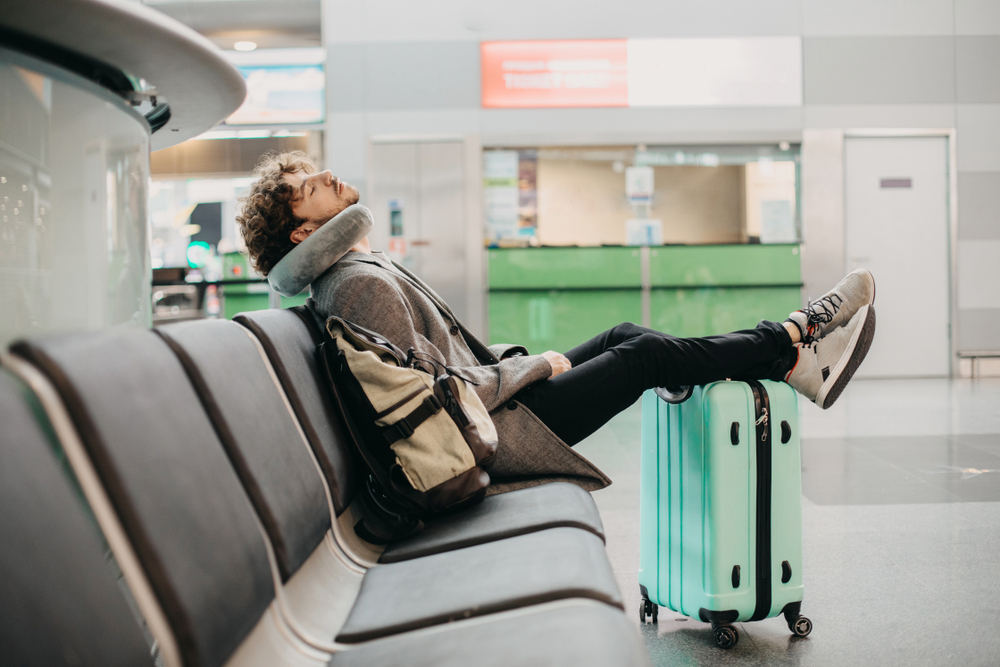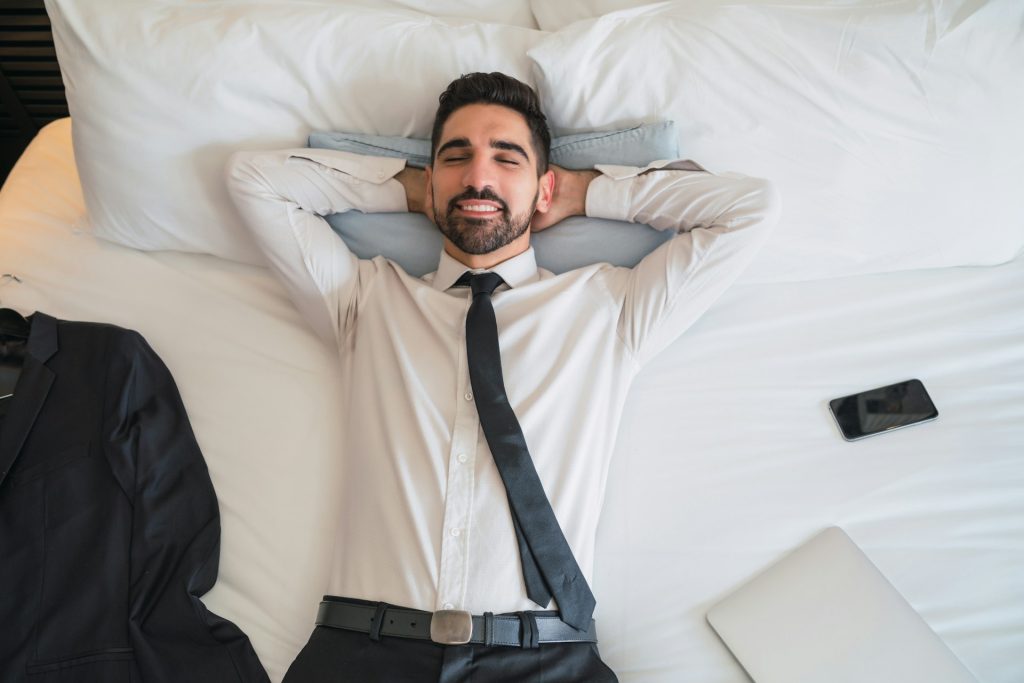Table of Contents
Travel pillows are a common comfort solution for long-haul flights, but many travelers need help using them effectively. Maximizing the benefits of a travel pillow involves choosing the right one and understanding the most comfortable ways to use it. Insights from experienced travelers and medical professionals suggest that using a travel pillow correctly is crucial for restful sleep and avoiding neck pain.
Whether you’re a seasoned jet setter or a first-time flier, learning how to use your travel pillow correctly can transform your travel experience. With these recommendations, your next journey will be more comfortable and restorative, thanks to a travel pillow.
Understanding Travel Pillows
Travel pillows are not just a luxury; they are important for combating discomfort on long-haul flights. With the right one, passengers can alleviate neck strain and improve rest. Frequent travelers stress the importance of understanding the types of travel pillows for comfort and support.
From traditional U-shaped neck pillows to innovative designs offering lateral or full-body support, the world of travel pillows is diverse. Understanding different pillow types and how they increase comfort can lead to a more enjoyable journey.
Types of Travel Pillows
There are many travel pillow options, each designed to address a specific need or preference. Some travelers choose memory foam travel pillows for their ability to mold to the neck, while others prefer microbead pillows for their lightweight and adjustable support. Inflatable travel pillows are prized for their compactness when deflated, making them a space-saving choice.
Ergonomic travel pillows can relieve neck pain by maintaining proper cervical alignment. Selecting the right type can enhance comfort during long hours in transit.
Choosing the Right Travel Pillow
Choosing the right travel pillow depends on factors like sleeping position and pre-existing neck pain. A good travel pillow should support the neck and head, preventing discomfort from awkward sleeping angles. Doctors and chiropractors emphasize aligning the pillow to maintain the spine’s natural curvature during rest.
Consider material, adjustability, and ease of maintenance when choosing a travel pillow. Memory foam pillows offer support but may be bulkier than inflatable ones. Ultimately, the right pillow aligns with your specific needs, ensuring comfortable sleep on a plane.
Preparing for Your Journey

Preparing to travel involves more than packing your suitcase; it includes strategizing for comfort. A critical aspect is selecting and packing a travel pillow for restful sleep on a plane. Given limited carry-on space, it’s essential to consider how your travel pillow will fit with the rest of your items.
Efficiently packing your travel pillow can make a difference in your travel experience. Whether you choose an inflatable pillow that stores away easily or a clip-on pillow that attaches to your luggage, ensuring accessibility is key to starting your journey successfully.
Packing Your Travel Pillow Efficiently
Packing a travel pillow requires balancing accessibility and space limitations. For inflatable pillows, fully deflate and fold them in an outer compartment of your carry-on. Memory foam or microbead pillows can be clipped onto luggage or compressed in a vacuum bag.
Consider a travel pillowcase with a built-in loop or carabiner to attach the pillow to your bag, saving space. Packing your travel pillow efficiently ensures it’s handy without sacrificing space for other items.
Hygiene and Maintenance
Keeping your travel pillow clean is crucial for a hygienic and pleasant travel experience. Opt for pillows with removable, washable covers to maintain cleanliness between uses. There are lots of potential germs on a plane; a travel pillow with a fresh cover can provide comfort and reduce exposure to germs.
In addition to cleanliness, maintaining the structural integrity of your pillow is important. For inflatable pillows, check for punctures or leaks before your trip to avoid mid-flight deflation. Storing your pillow in a protective case can prevent damage and keep it in top condition for your next adventure.
Optimal Use of Travel Pillows
Using a travel pillow effectively is not just about having it—it’s about positioning it for the best support. The traditional neck pillow position is popular for comfortable support during long hours in transit. However, there are innovative ways to use travel pillows that can enhance your comfort, especially on long-haul flights.
The Classic Neck Pillow Position
The U-shaped design of the classic neck travel pillow supports the head and neck, maintaining proper alignment and reducing strain. By fitting snugly around the neck, this pillow prevents the head from falling to the side, a common issue when trying to rest in a seated position.
Common Mistakes to Avoid
When using a neck pillow, it’s important to avoid common mistakes that can negate its benefits. One mistake is placing the pillow with the opening at the back of the neck, which fails to provide the intended support. Instead, position the pillow with the opening to the side or front for better alignment and support.
Another mistake is using a pillow that is too soft or too firm, as it may not offer proper support. Ensure your travel pillow has the right balance to cradle your neck without pushing your head forward. Being mindful of these issues can significantly improve your travel pillow’s effectiveness.
Innovative Body Pillow Uses
Beyond neck support, travel pillows now offer full-body comfort options for travelers. Body pillows are adaptable and can provide additional support where it’s most needed. Whether that’s under the arms, along the back, or between the knees, these pillows become valuable for comprehensive comfort on long-haul flights.
Other Pillow Positions

Experimenting with different pillow positions can provide extra comfort during travel. Reversing your travel pillow or using over-the-shoulder techniques can give lateral support and frontal cushioning easily adaptable to individual needs.
The Reversed Neck Pillow Technique
Reversing a travel pillow so the opening faces the chin instead of the nape of the neck is called the reversed neck pillow technique. It can help your head and neck feel better when the regular way doesn’t make you comfortable or keep your spine straight.
The reversed travel pillow technique can alleviate neck strain by providing a cushioned brace for the chin, preventing the head from falling forward during travel. This position can be helpful for people who have trouble keeping their neck straight, as it helps maintain the back’s natural, slightly curved shape.
Over-the-Shoulder Positioning
For some travelers, the over-the-shoulder positioning of a travel pillow offers welcome support. Draping the pillow across one shoulder and resting the head against it sideways can prevent the head tilting. This is particularly useful for travelers who lean against the window or the side of their seat. This cushioning also helps maintain neck and spine alignment, reducing muscle strain and discomfort from poor posture.
Frontal Position for Forward Sleepers
Forward sleepers often struggle to find a comfortable resting position. The frontal position involves placing the travel pillow on the traveler’s chest or tray table, allowing them to lean forward into the pillow, which can help maintain spine alignment for face-down sleepers.
To make the front position work, travelers should adjust the pillow’s placement to ensure it provides sufficient cushioning while supporting the forehead or chin. This may involve inflating or deflating an inflatable travel pillow or stacking other pillows for added height to create a soft yet supportive surface that mimics the feel of sleeping face-down on a bed.
Special Considerations
When preparing for travel, it’s important to consider pre-existing conditions that might affect comfort. Special considerations should be given to ensure the journey is bearable and restful, especially for those with neck or back pain.
Traveling With Back Pain
Travelers with back pain face unique challenges, but selecting the right travel pillow can make a significant difference. Opting for an aisle seat can provide easier access for movement, crucial for those needing to manage discomfort by stretching or changing positions frequently.
Selecting Pillows for Spinal Alignment
Choosing a travel pillow that supports spinal alignment is critical for those with back pain. A pillow that contours the spine’s natural curve can help maintain proper posture and alleviate pressure points. The right pillow should be adaptable to various sitting positions and provide enough firmness for real support without being too rigid.
Travelers should look for memory foam or ergonomic pillows to encourage spinal alignment. These pillows can help maintain the spine’s lordotic curve and reduce the risk of pain during travel.
Additional Measures to Alleviate Discomfort
Apart from selecting the right pillow, travelers with back pain should consider additional measures to alleviate discomfort. Staying hydrated, using lumbar support cushions, and applying heat or cold therapy can all contribute to a more comfortable journey. These strategies can help relax muscles, reduce inflammation, and provide relief from chronic pain.
Stretching or walking around the cabin can aid muscle relaxation and circulation, essential for managing back pain. For specific conditions like sciatica or a herniated disc, carrying necessary medications and requesting extra legroom seating can further help manage pain.
Achieving Proper Posture in Transit
Proper posture in transit benefits those with back problems and prevents discomfort for all travelers. Maintaining a straight back with feet flat on the floor promotes better health during travel.
Importance of Postural Health While Traveling
The importance of postural health while traveling cannot be overstated. Good posture reduces the risk of musculoskeletal issues and contributes to a more comfortable and enjoyable journey. For those seated in aisle seats, ensuring that the feet are placed shoulder-width apart and that there’s enough space to maintain a straight back is essential.
Travelers should also be mindful of their luggage placement, as storing bags under the seat can interfere with legroom and, consequently, proper posture. By prioritizing postural health, travelers can arrive at their destination feeling refreshed and free of additional aches or pains that could impede their travel experience.
Pillows and Ergonomics
Integrating ergonomics into your travel is essential for preventing discomfort and strain. The right travel pillow supports natural posture, reducing the risk of neck pain and fatigue. For instance, an inflatable neck pillow can be adjusted to provide the precise level of firmness and support your cervical spine needs, aligning it with the rest of your spine. This is crucial for maintaining a neutral position, especially when you’re confined to a seat for extended periods.
When selecting a travel pillow, consider its shape and how it will interact with your seating environment. U-shaped neck pillows, for instance, are designed to cradle the neck, while others might provide lateral support. Ensuring the pillow feels comfortable and keeps your head and neck aligned with your spine is a sign of good ergonomic design, which can lead to more restful sleep and less chronic neck pain.
Expert Tips for Restful Journeys

Experts in sleep and travel health suggest that restful journeys depend on using travel pillows effectively. Some physicians recommend pillows that suit sleeping habits. For example, stomach sleepers might benefit from a thinner pillow that prevents neck overextension. Others emphasize the importance of a seat-attached pillow to prevent shifting during sleep.
Frequent flyers agree that customizing your travel pillow is essential, whether by adjusting the air volume of an inflatable pillow or choosing a memory foam model, to achieve bed-like comfort. The correct pillow can notably improve sleep quality, even in difficult situations like on planes, trains, or buses.
Doctor’s Tips for Using Travel Pillows
Doctors stress using a neck pillow correctly to prevent neck pain during travel. The pillow should bridge the gap between the neck and the headrest without pushing the head forward. Reclining your seat slightly and using a U-shaped pillow can lessen spinal pressure, enhance support, and maintain the natural curvature of the neck, avoiding stiffness and discomfort.
Two more suggestions:
- frequently change positions;
- use the pillow to support different areas as needed.
For travelers with neck issues, doctors suggest consulting a trusted source or healthcare provider for personalized advice on pillow selection and usage. Keeping the neck supported and aligned during travel can prevent new issues and manage chronic neck pain.
Sleep Specialists’ Recommendations
Sleep specialists stress the importance of consistent sleep habits and environment for quality sleep. They recommend choosing a travel pillow that replicates the feeling of your home pillow. A firmer pillow may be ideal for side sleepers, while stomach sleepers may need a softer, more pliable option. The goal is to create a familiar and conducive sleep setting, even while traveling.
Experts recommend enhancing your travel pillow with technology for a restful journey. Using noise-canceling headphones or a sleep app that generates white noise enhances sensory and physical comfort, facilitating quality sleep even under challenging travel conditions.
Improving Travel Pillow Comfort
Accessorizing your travel pillow can enhance its effectiveness and comfort. Consider breathable, hypoallergenic pillow covers that feel soft against the skin. Some travelers might appreciate a pillow with a pocket for earplugs or an eye mask. A travel pillow with a removable and washable cover promotes hygiene during long-haul flights where exposure to germs is higher.
A lumbar support cushion is like a friend who’s got your back, literally. It helps you sit up straight and eases lower back ache. For stomach sleepers, a small, inflatable pillow under the hips mimics bed support, improving comfort and sleep quality.
Keeps Your Travel Pillow in Place
A travel pillow that attaches to your seat or luggage can make it easier to carry and ensure it stays in place while you sleep. Some pillows come with built-in features, like pockets for a phone or glasses. Adding a soft, machine-washable pillowcase enhances hygiene and personalizes your travel pillow, making it cozy.
Consider an inflatable travel pillow for stomach sleepers to be placed on the tray table for a natural sleeping position. Pair it with a comfortable eye mask for a better sleeping environment.
Combining Pillows and Technology for Better Sleep
Travelers can use apps to track sleep patterns or produce soothing sounds along with a travel pillow. Incorporating temperature-regulating technology into your pillow can help maintain a comfortable sleeping environment, crucial for quality rest during travel.
Try using sleep aids like smartwatches or fitness trackers to monitor sleep cycles. These devices help determine optimal sleep times based on your activity levels, ensuring you’re well-rested upon arrival. Combined with a supportive travel pillow, these tools can transform a cramped seat into a more comfortable sleeping space closer to your bed.
Concluding Your Comfortable Travel Experience
Assess your travel pillow. Does it help you sleep comfortably, or are there things that could be improved? Consider the pillow’s support of your preferred sleeping position, like sleeping on your stomach, and whether it causes neck pain. Honest performance assessment helps in making better choices for future travel.
Consider the pillow’s versatility and ease of use. Is it easy to inflate and deflate? Does it stay in place, or does it require frequent adjustments? Weighing these factors will help you determine the value of your travel pillow and if it meets your comfort and convenience needs on the road.



